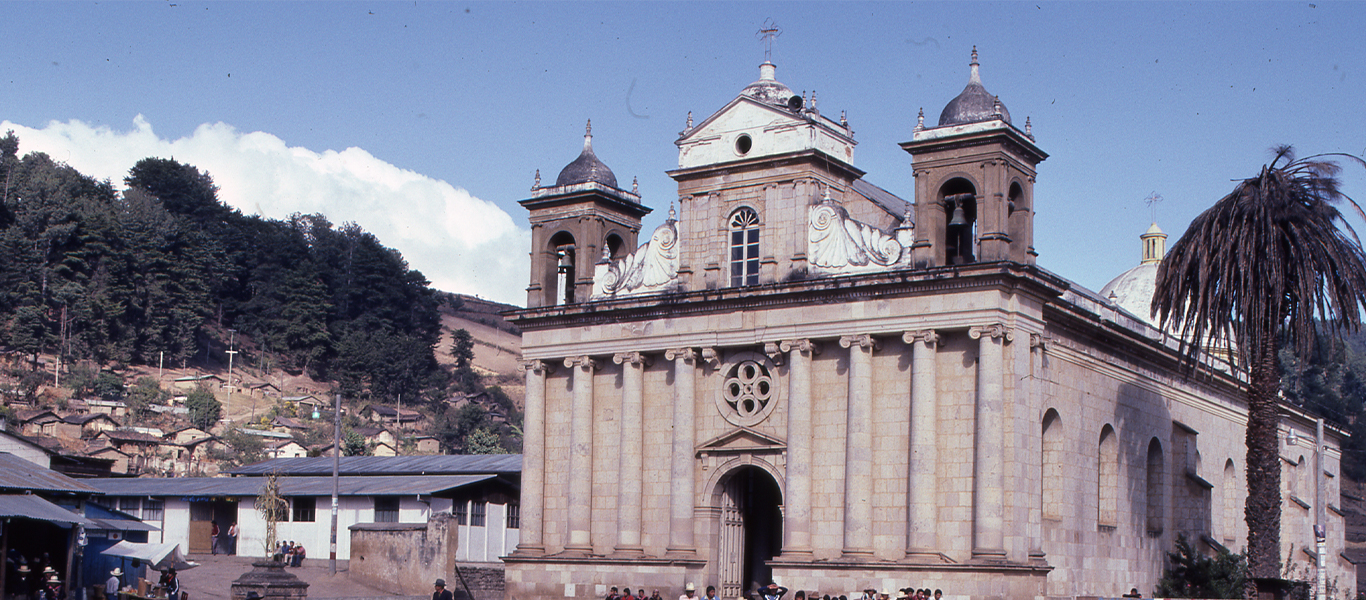
Volume Two – Central America: Geography and Spanish Conquest
In spite of the earth’s natural beauty, geography is often a major factor in human conflict.
Central America is a case in point – the fertile soil, lush forests, and beautiful mountains, volcanoes and lakes are a reason so many have fought and died in the region, not just in the 1970s and 1980s, but going back several hundreds of years.
Why?
Students explore how the environment affected agriculture, population, and cities in Mesoamérica before and after the encounter with Spanish and other European explorers that led to the colonization of Central America.
California Curriculum Framework and Standards
10th Grade California Curriculum Framework and Standards
World History and Geography: Medieval and Early Modern Times
Students in grade seven study the social, cultural, and technological changes that occurred in Europe, Africa, and Asia in the years A.D. 500–1789. After reviewing the ancient world and the ways in which archaeologists and historians uncover the past, students study the history and geography of great civilizations that were developing concurrently throughout the world during medieval and early modern times. They examine the growing economic interaction among civilizations as well as the exchange of ideas, beliefs, technologies, and commodities. They learn about the resulting growth of Enlightenment philosophy and the new examination of the concepts of reason and authority, the natural rights of human beings and the divine right of kings, experimentalism in science, and the dogma of belief. Finally, students assess the political forces let loose by the Enlightenment, particularly the rise of democratic ideas, and they learn about the continuing influence of these ideas in the world today.
7.1 Students analyze the causes and effects of the vast expansion and ultimate disintegration of the Roman Empire.
1. Study the early strengths and lasting contributions of Rome (e.g., significance of Roman citizenship; rights under Roman
law; Roman art, architecture, engineering, and philosophy; preservation and transmission of Christianity) and its ultimate
internal weaknesses (e.g., rise of autonomous military powers within the empire, undermining of citizenship by the growth of
corruption and slavery, lack of education, and distribution of news).
2. Discuss the geographic borders of the empire at its height and the factors that threatened its territorial cohesion.
3. Describe the establishment by Constantine of the new capital in Constantinople and the development of the Byzantine
Empire, with an emphasis on the consequences of the development of two distinct European civilizations, Eastern Orthodox
and Roman Catholic, and their two distinct views on church-state relations.
7th Grade World History and Geography: Medieval and Early Modern Times
Curriculum Framework (2016)
Unit 6 of 10, The Americas, 300-1490, pp. 212-215
Geography and environment affect the expansion of agriculture in Mesoamerica, the existence of rich mineral deposits, and fuel the Maya rise to power. Deforestation, erosion, and drought contribute to the decline of the Maya.
Content Standard 7.7.1 (1998)
Study the locations, landforms, and climate of Central America and their effects on Mayan economies, trade, and development of urban societies.
Curriculum Framework (2016)
Unit 9 of 10, Global Convergence, 1450-1750, pp. 224-230
European colonizers seek agricultural products such as corn and potatoes, as well as addictive substances such as tobacco and chocolate, and precious metals. Christian missionaries seek religious conversation of natives. African slavery leads to hybrid populations and culture. Europeans establish colonies, take land and use it to grow cash crops, force native people to work for Europe.
Content Standards 7.7.2 and 7.7.3 (1998)
Study the roles of people in each society, including class structures, family life, war-fare, religious beliefs and practices, and slavery.
Explain how and where empires arose, and how they were defeated by the Spanish.
- Students prepare their own analyses of the conflicts in Central America, drawing on the photographs of the Richard Cross collection, oral history interviews, and other resources.
- Students answer and develop their own Compelling and Supporting Questions.
Compelling and Supporting Questions
- are intellectually rigorous and
open-ended - are relevant and interesting
- spark inquiry
- motivate students to want to learn more
Bullet points that
- cover basic content
- inform slide presentations
- teach note-taking
- lead to resources – websites and published curriculum
Evaluating Sources & Using Evidence
- Students evaluate and analyze multiple sources and perspectives.
- Students make conclusions supported by evidence carefully gathered and analyzed.
- Authentic inquiry vs. exploitation
- People, land and physical structures
- Historical thinking skills
- Personalizing historical photographs
Formative and summative assessment options
Bibliographies
References to support deeper study of conflict in Central America
Richard Cross’ photographs of
• Central America
